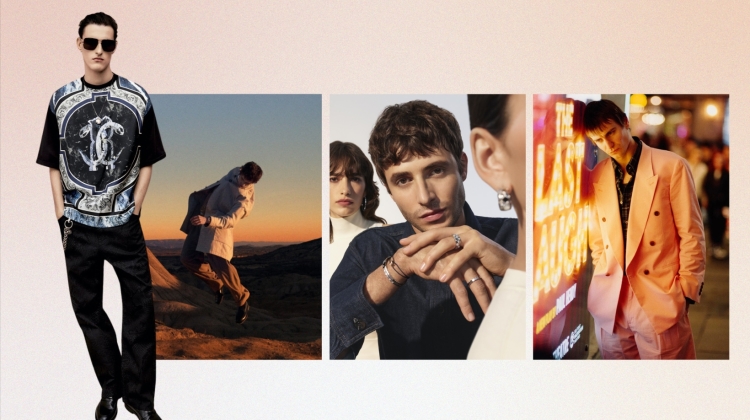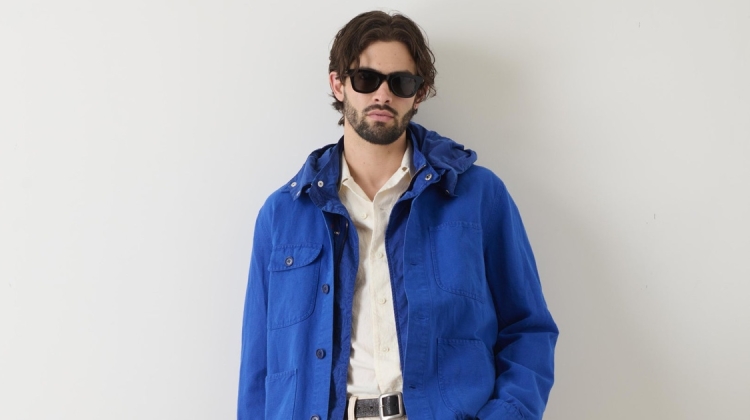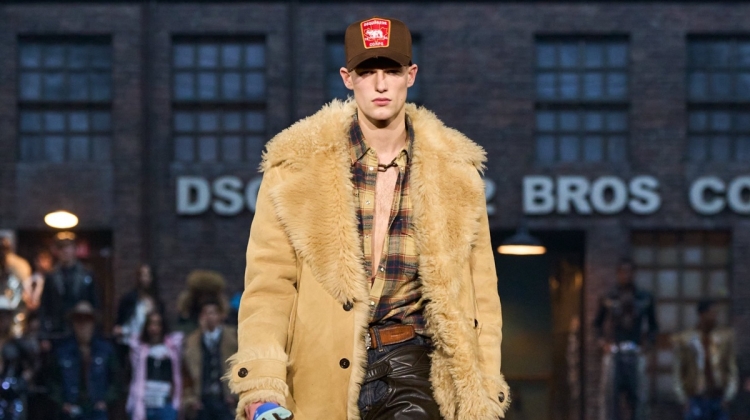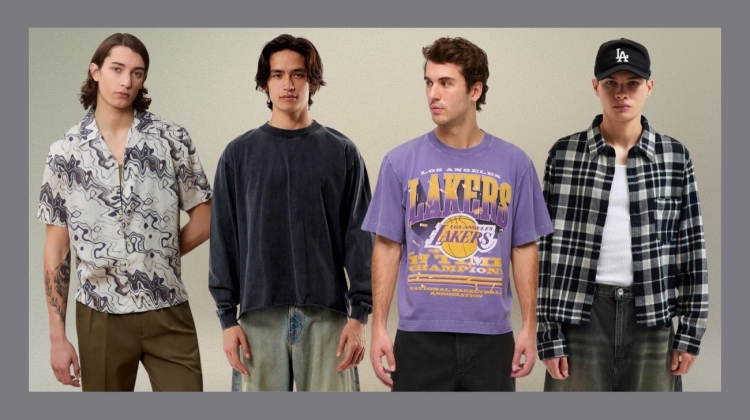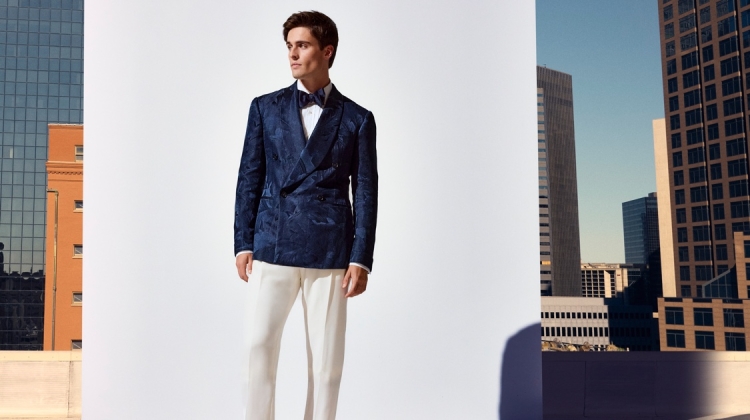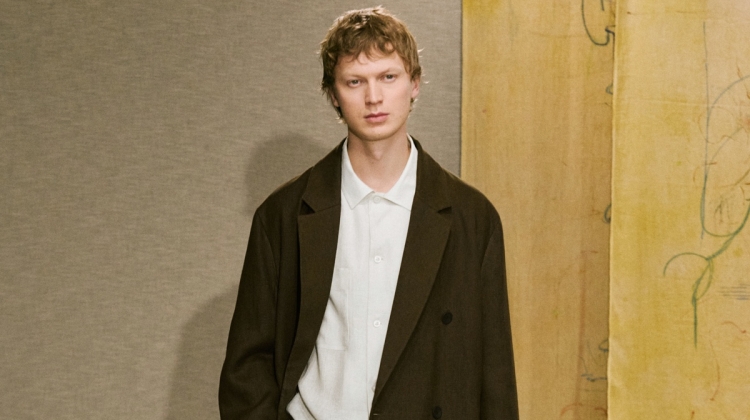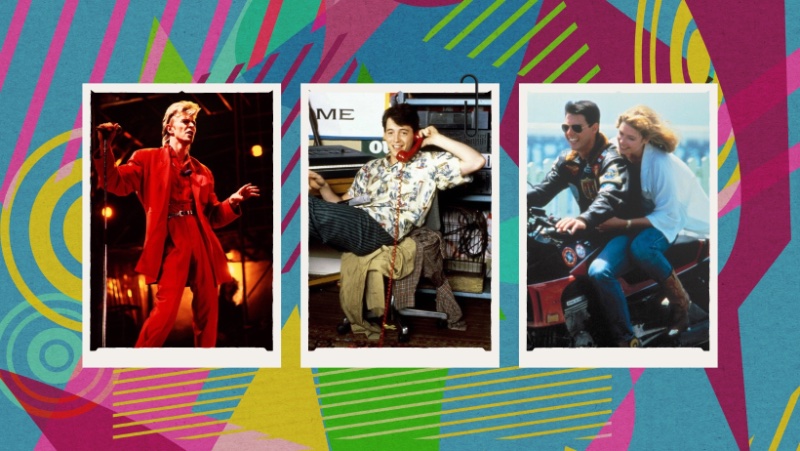
For enthusiasts of bold colors, loud patterns, and eclectic style, 80s men’s fashion defines a golden era of distinctive flair. Adopting 80s outfits was more than sheer dressing—it represented a bold statement of individuality and style.
Consider the scene from American Psycho where Patrick Bateman obsesses over his business card—this level of detail reflects the era’s serious approach to fashion.
1980s Men’s Fashion
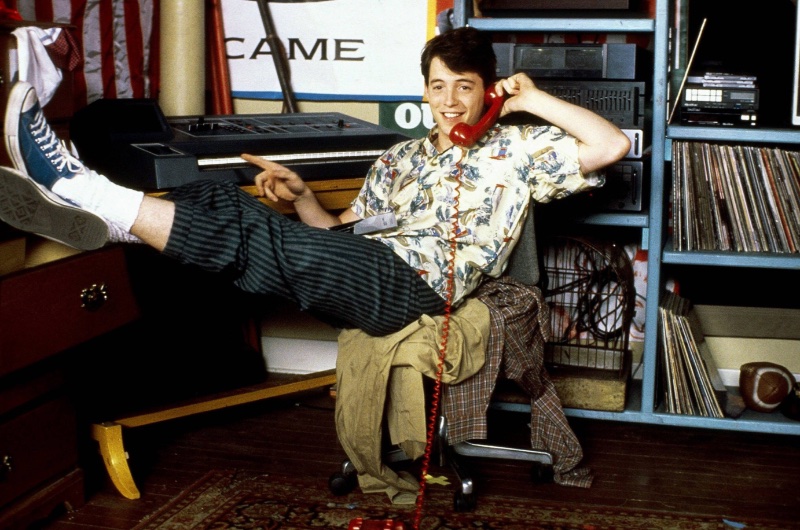
The 1980s were all about excess. Men wanted to stand out and be seen as flourishing and powerful. This was reflected in the boldness of their clothing choices.
Suits with broad shoulders and bright-colored accessories became commonplace in offices across America. The preppy look also made a comeback, with polo shirts, khakis, and boat shoes becoming staples of the upper-class wardrobe.
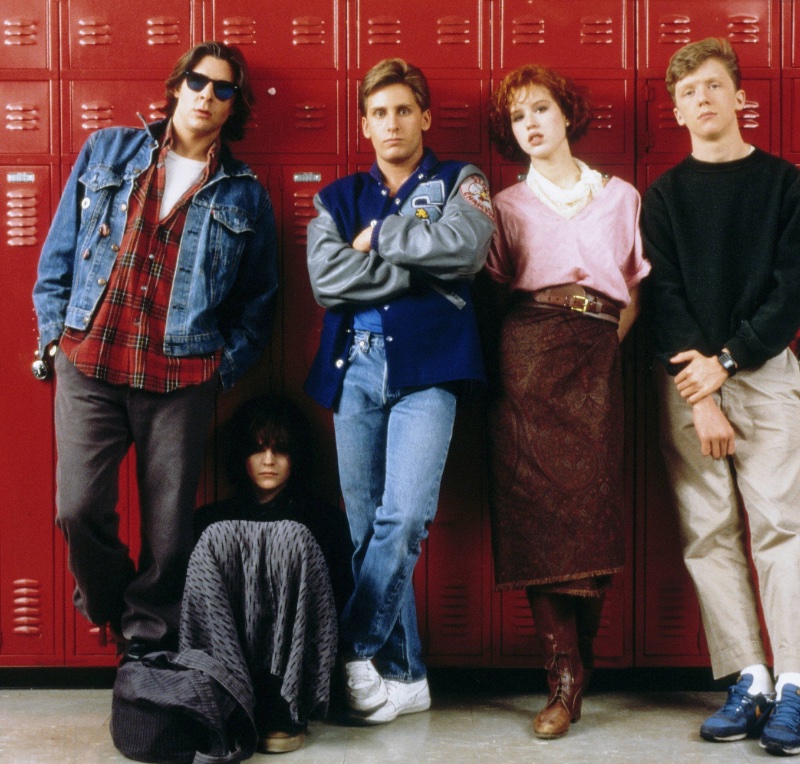
But not everyone wanted to dress like a business person or prepster. Films like The Breakfast Club showcased the diversity of youth fashion, from preppy to rebellious.
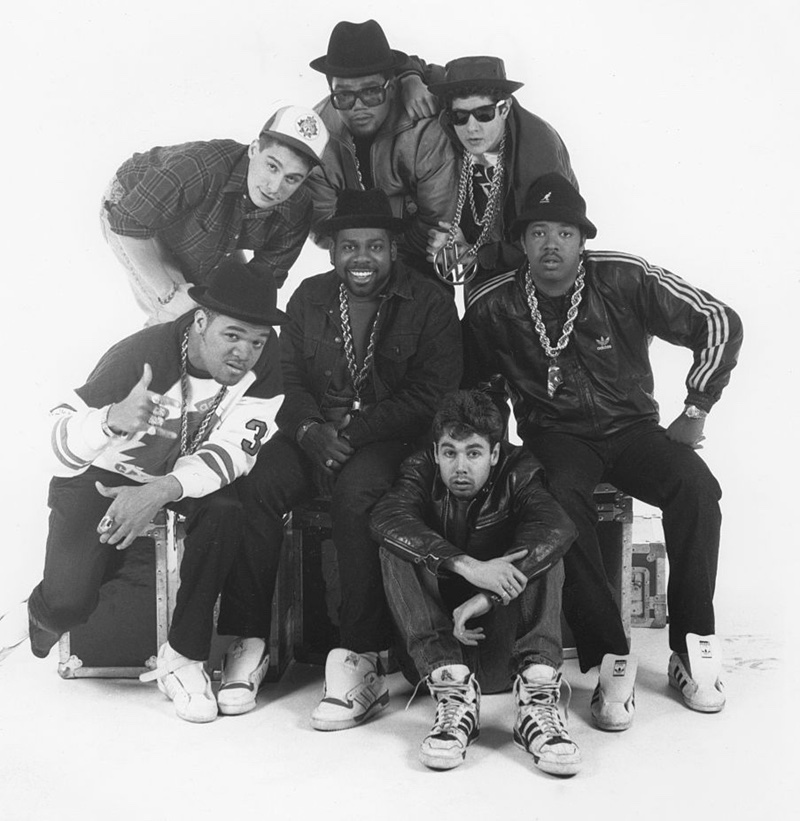
During the decade, the punk rock movement and hip-hop groups like the Beastie Boys greatly influenced men’s fashion. Leather jackets, gold chains, ripped jeans, snapbacks, and band t-shirts were all part of this edgy style that rejected conformity.
Fashion in this era was about aesthetics and a medium for self-expression, enabling men to showcase their individuality through attire.
Men’s 80s Outfits: Iconic Inspiration
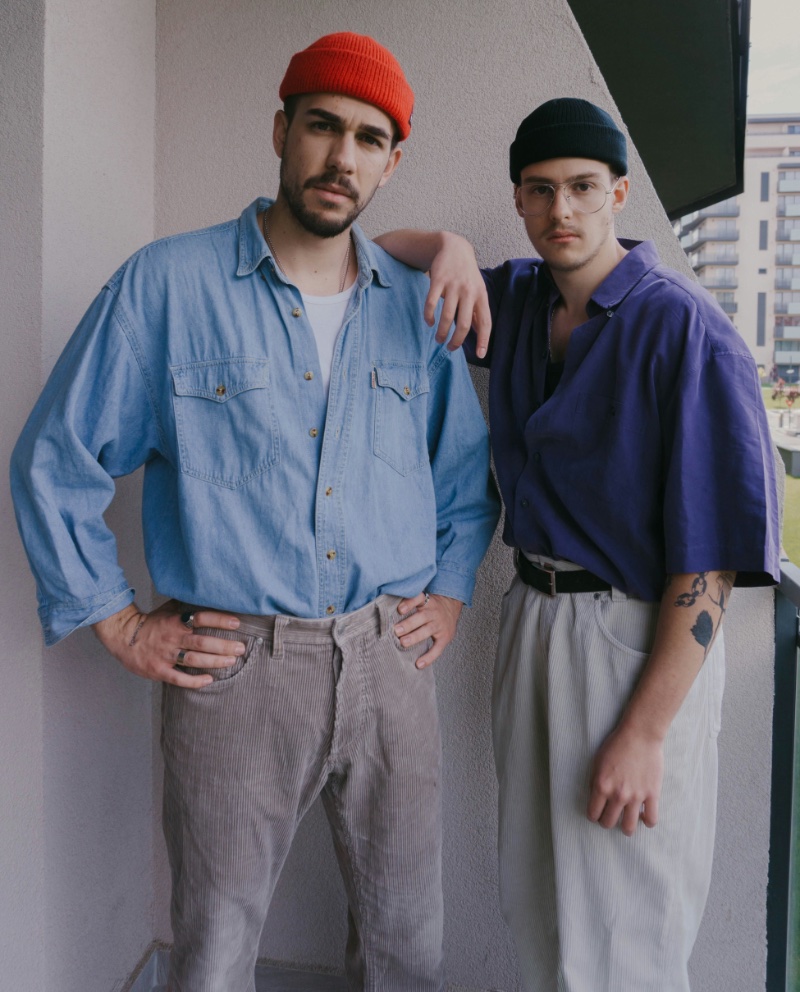
When envisioning the iconic 80s outfits men sported, one conjures images of relaxed yet bold styles that defined the spirited fashion of the decade. Oversized and boxy shirts paired with corduroy or pleated trousers set the stage for an unmistakably 80s casual look.
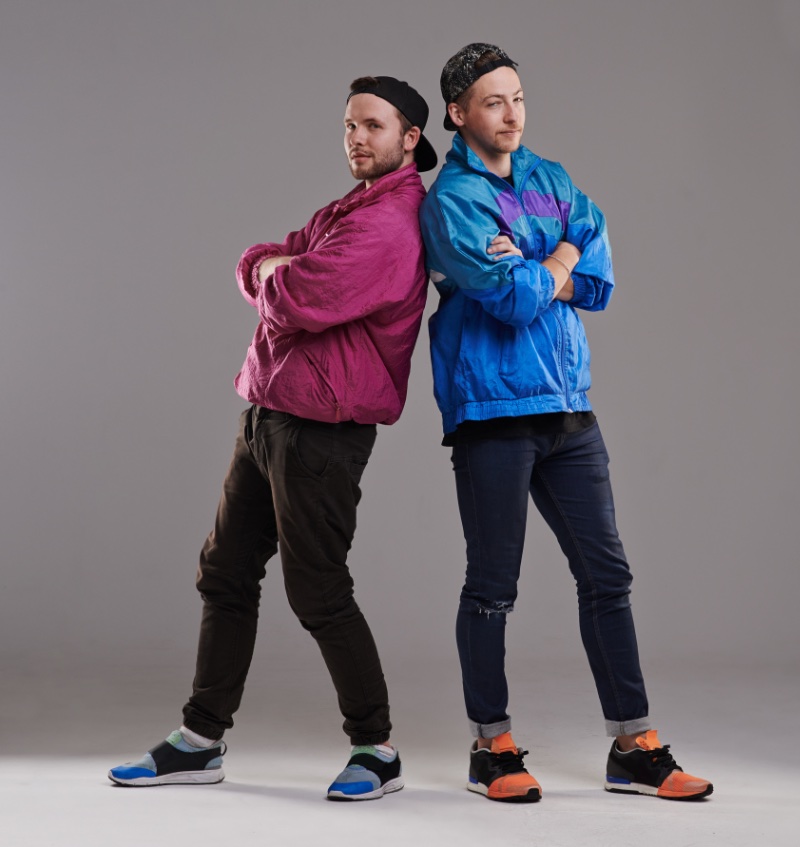
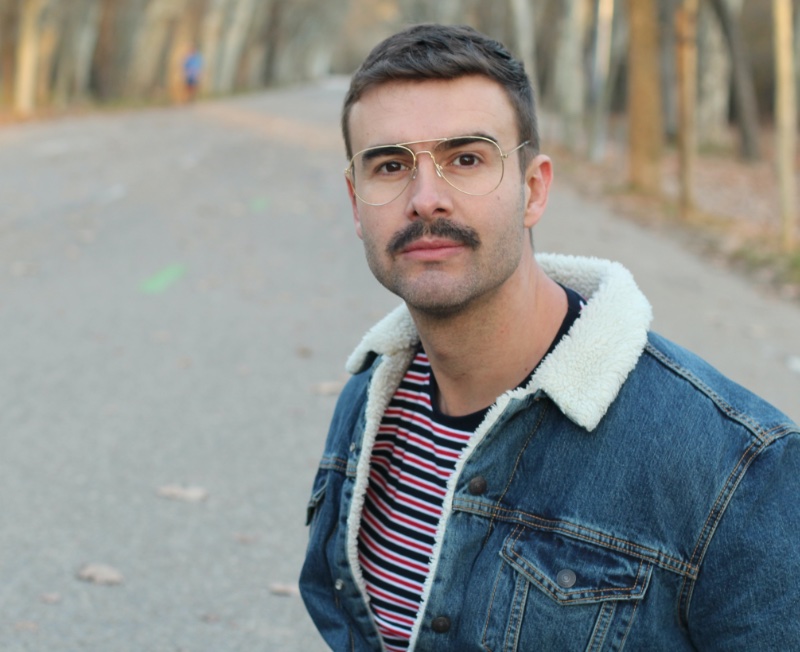
The 1980s celebrated sporty chic, evident in vibrant windbreakers and contrasting pants like acid-wash jeans. They also welcomed the classic denim jacket as a staple, pairing it with everything from striped tees to aviator glasses.
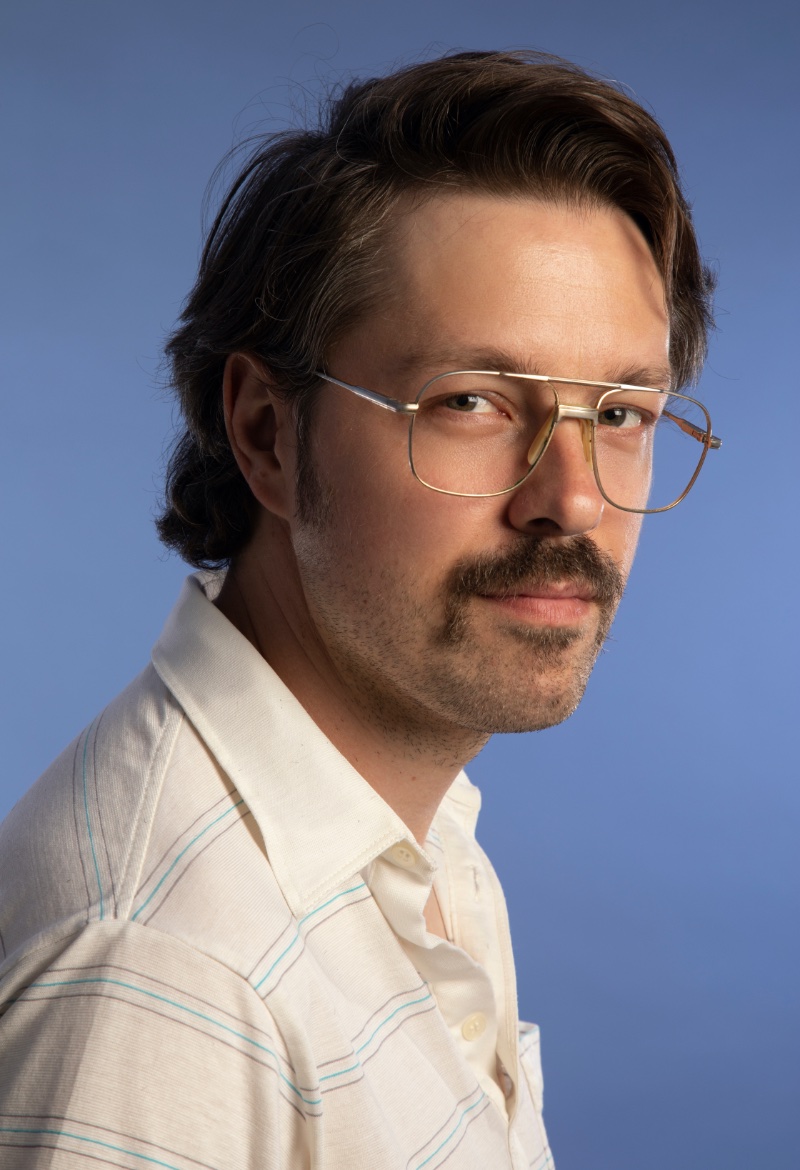
The decade’s signature looks are a go-to for those seeking to embrace the nostalgic flair, whether in everyday fashion or for a themed 80s costume party. Consider vibrant patterns on short-sleeve button-down shirts and high-waisted trousers.
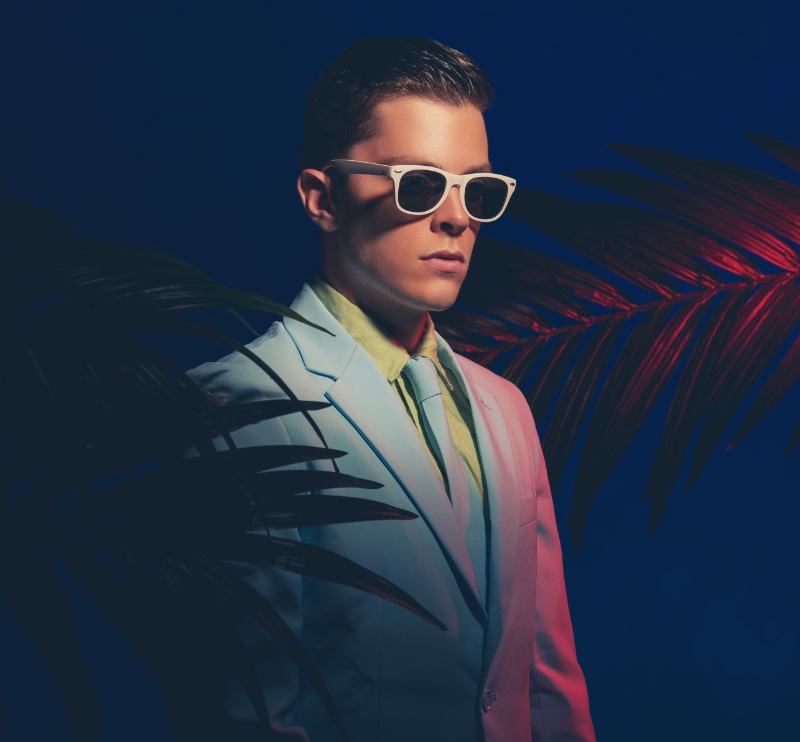
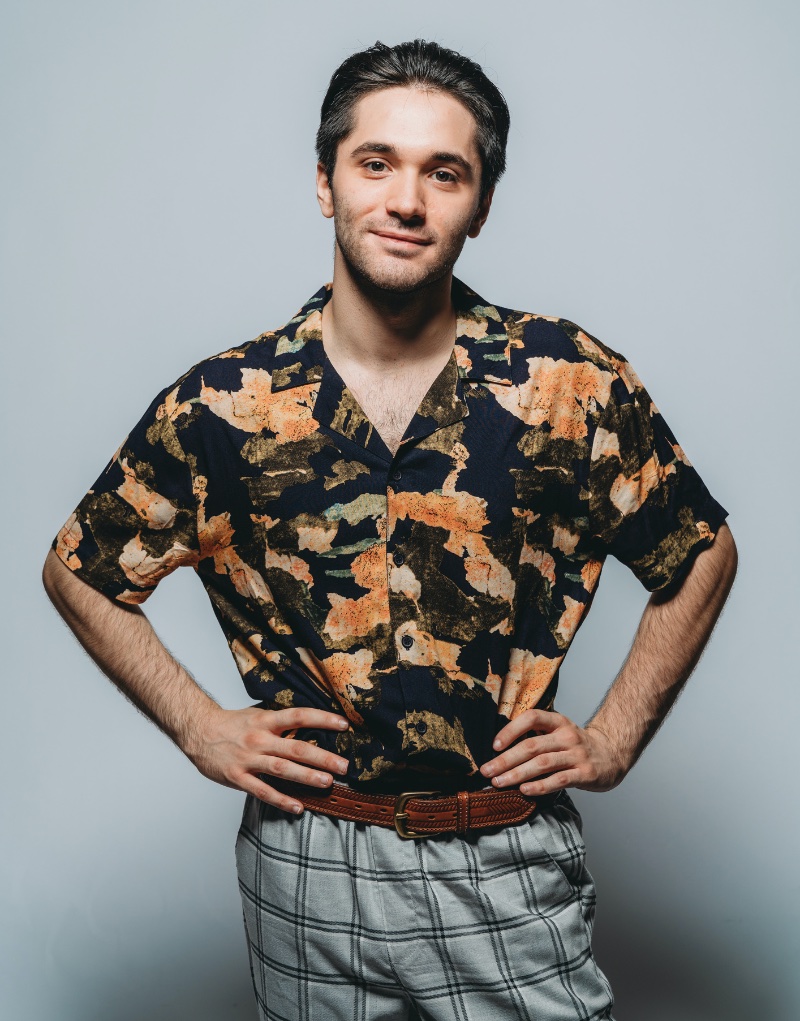
Additionally, a suit jacket’s pastel sophistication can make any outfit reminiscent of the 80s style. These classic pieces offer a sartorial nod to a decade known for its daring approach to menswear.
Classic 80s Trends
During the 1980s, men embraced the opportunity to express themselves with fashion statements, often opting for bold or unconventional styles.
Power Dressing: Suits, Shoulder Pads & Bold Colors
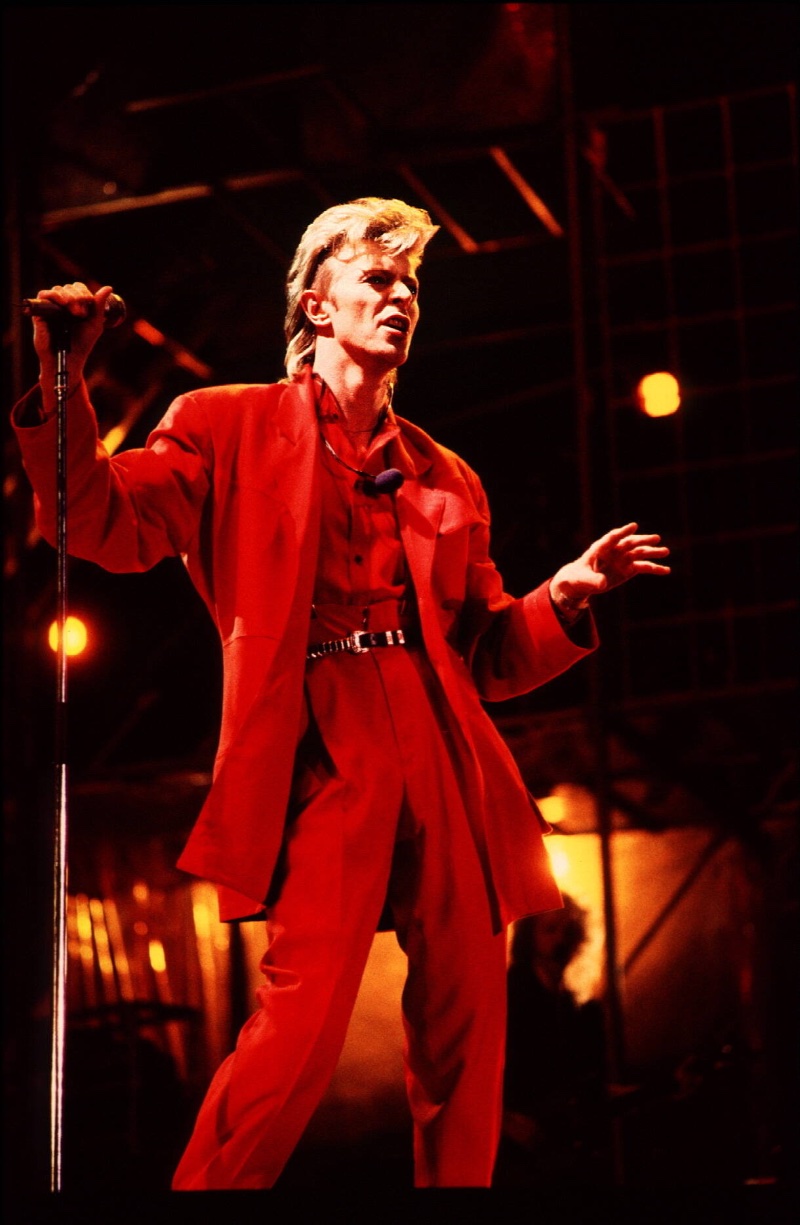
When someone says 80s fashion, the first thing that probably comes to mind is power dressing. This was the era of big hair, bold shoulders, bright colors, and iconic style influencers like David Bowie.
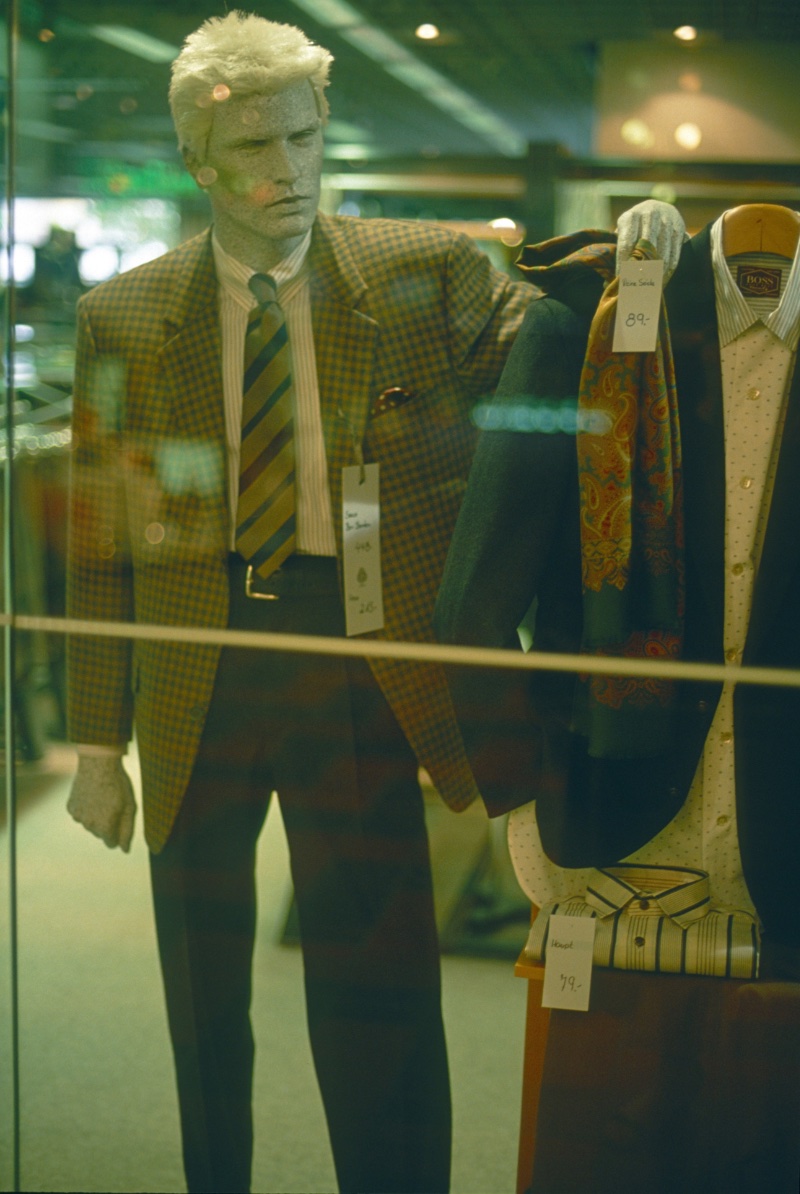
The power suit was the must-have item for any working man, and it wasn’t complete without a pair of shoulder pads to make you look broader and more powerful.
Popular brands like Giorgio Armani, who dressed Richard Gere in the iconic film American Gigolo, revolutionized men’s suits. These oversized blazers were often accompanied by equally bold ties in bright hues like neon pink or electric blue.
Pinstripe suits and oxford shirts also played a significant role in the power dressing movement. But it wasn’t just about the suits.
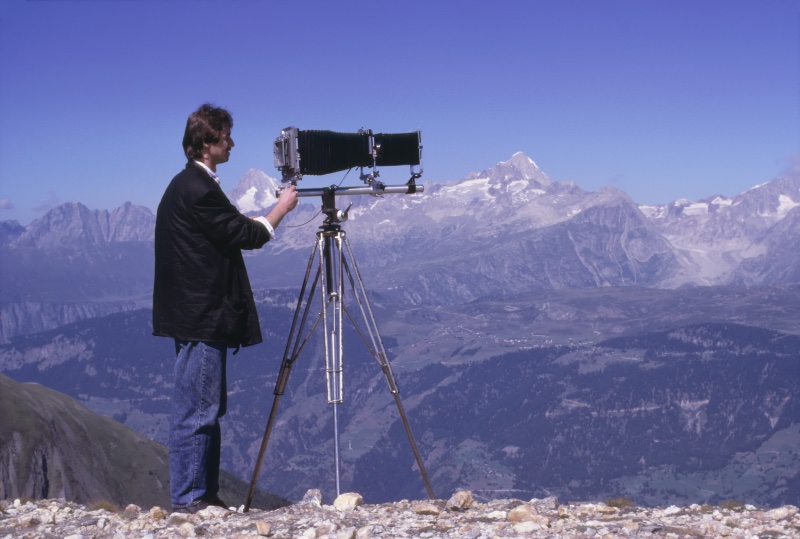
Power dressing also meant dressing up your casual wear with sophisticated touches like oversized blazers or vests. It was about projecting an image of success and sophistication in everything you wore.
Preppy Style: Polo Shirts, Khakis & Boat Shoes
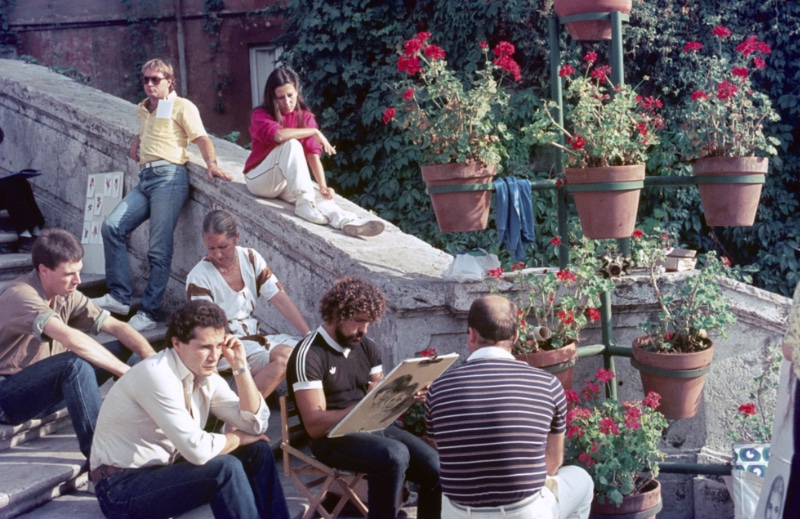
While power dressing was all about projecting an image of professional success, the preppy style was more about projecting an image of casual sophistication. Think polo shirts with popped collars, khaki pants, shorts, and boat shoes.
This style was heavily influenced by Ivy League fashion from the 1950s and 60s but updated for a modern audience in brighter colors like pastel pink or mint green. Brands like Ralph Lauren’s Polo and Lacoste became pivotal, appealing to those aiming for a sophisticated yet casual look.
Punk Rock Influence: Leather Jackets, Ripped Jeans & Band T-shirts
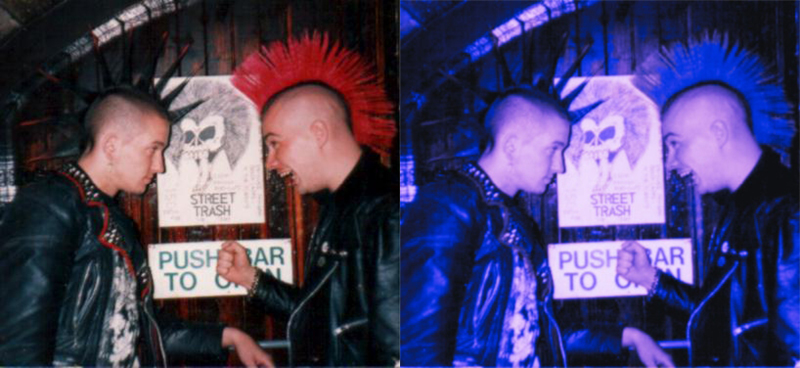
While power dressing and preppy styles were in vogue, many men veered towards the rebellious punk rock aesthetic. Iconic to this trend were leather jackets, ripped jeans, and band tees featuring groups like The Ramones or The Sex Pistols, embodying a rejection of mainstream norms for a countercultural flair.
Punk wasn’t just about the clothes; extreme hairstyles, such as mohawks, bold makeup choices, and heavy black eyeliner, were vital to expressing this defiant spirit.
Popular Men’s Clothing
The 80s men’s fashion color palette has genuinely stood the test of time. Popular styles during this era included bold and vibrant colors and frequent patterns.
Athletic Wear
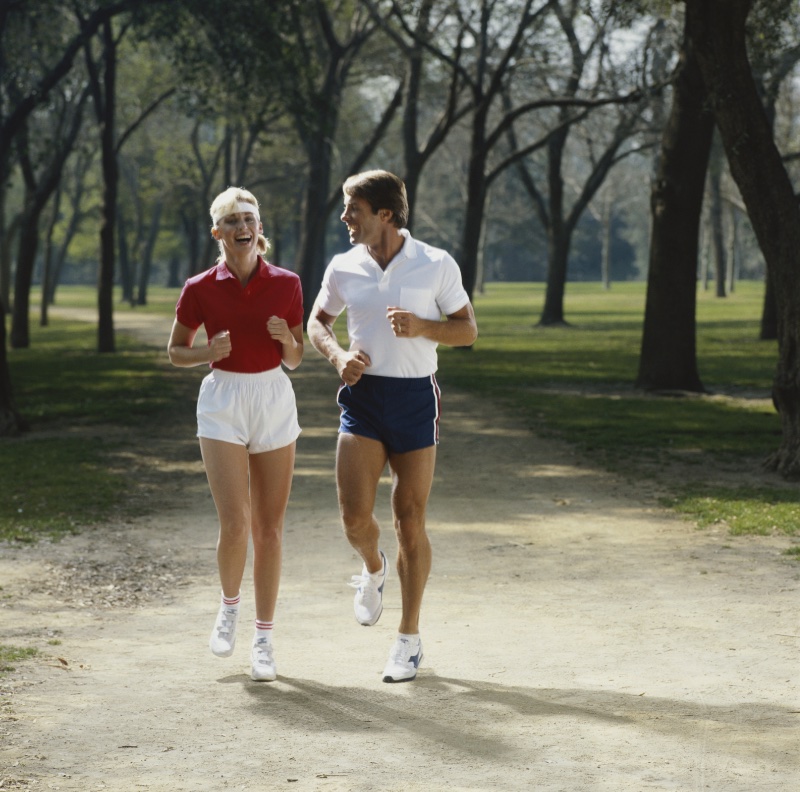
Athleisure and workout fashion was at the forefront of the 1980s, with sportswear becoming popular for everyday wear. Tracksuits, athletic shorts, workout tanks, and more were commonly worn for exercise and casual attire, blurring the lines between fashion and function.
Denim Jackets, Vests & High-Waisted Jeans
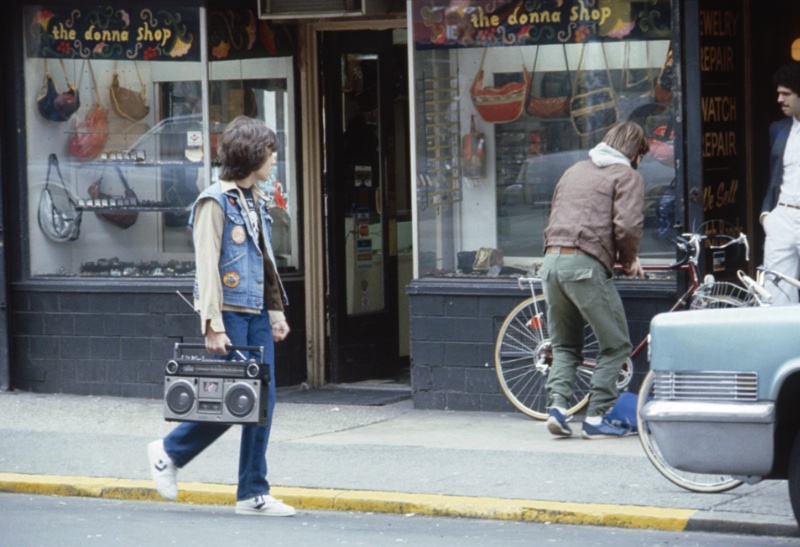
The 80s were a golden era for denim, with double denim looks and acid-washed jeans becoming some of the most popular men’s styles. Denim jackets and vests paired with high-waisted jeans from brands like Calvin Klein created a fashionable and versatile outfit, perfect for a night out or a casual day at work.
Sweaters
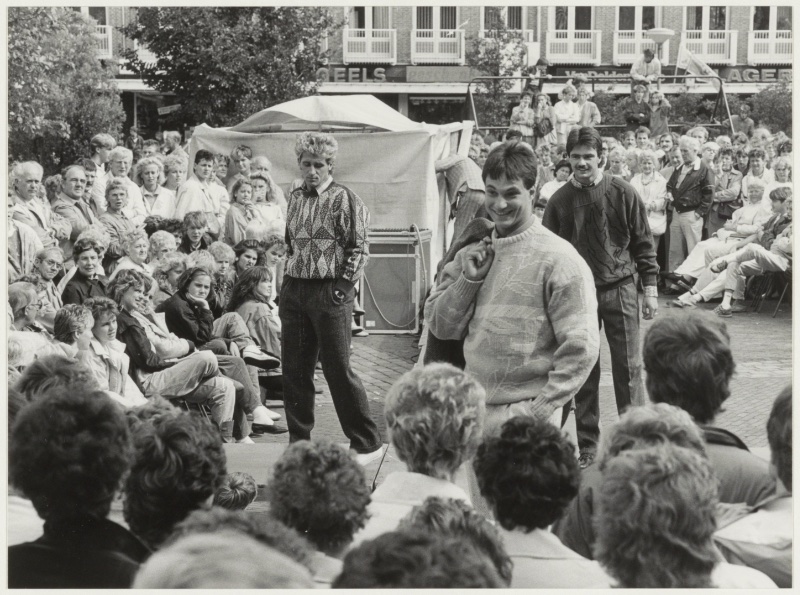
Sweaters played a prominent role in men’s style, with preppy fashion trends emphasizing the importance of layering. Crewneck sweaters, V-necks, and cardigans in solid colors or simple patterns were often worn over button-down shirts for a polished yet relaxed look.
Parachute & Hammer Pants
Parachute and Hammer pants, popularized by MC Hammer, were a defining look. They offered a unique and comfortable alternative to traditional denim jeans. Parachute pants were characterized by their baggy fit and distinctive cinched ankles, which made them particularly popular among dancers and performers.
The influence of parachute pants can still be seen in modern harem pants, which maintain a similar aesthetic.
T-shirts
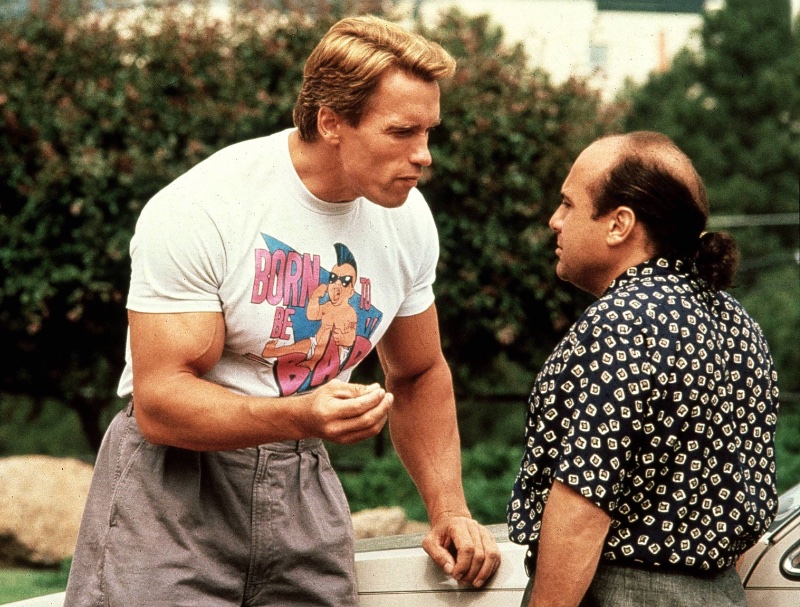
Graphic tees and shirts with slogans became increasingly popular, allowing men to express their personalities and interests through clothing. The variety of styles and the comfortable nature of T-shirts have ensured their lasting casual popularity with brands like Calvin Klein.
Members Only Jackets
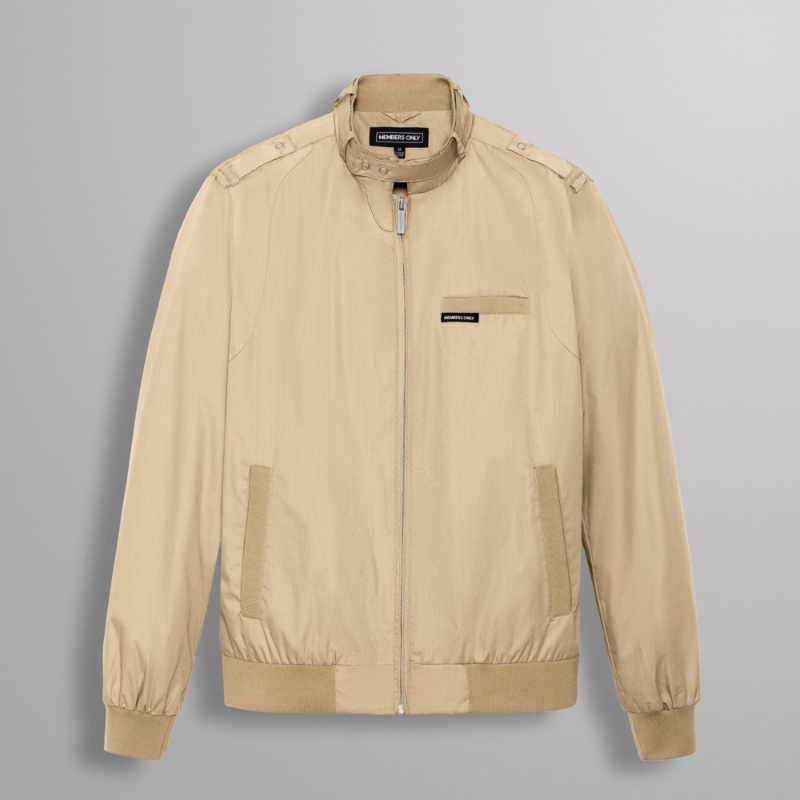
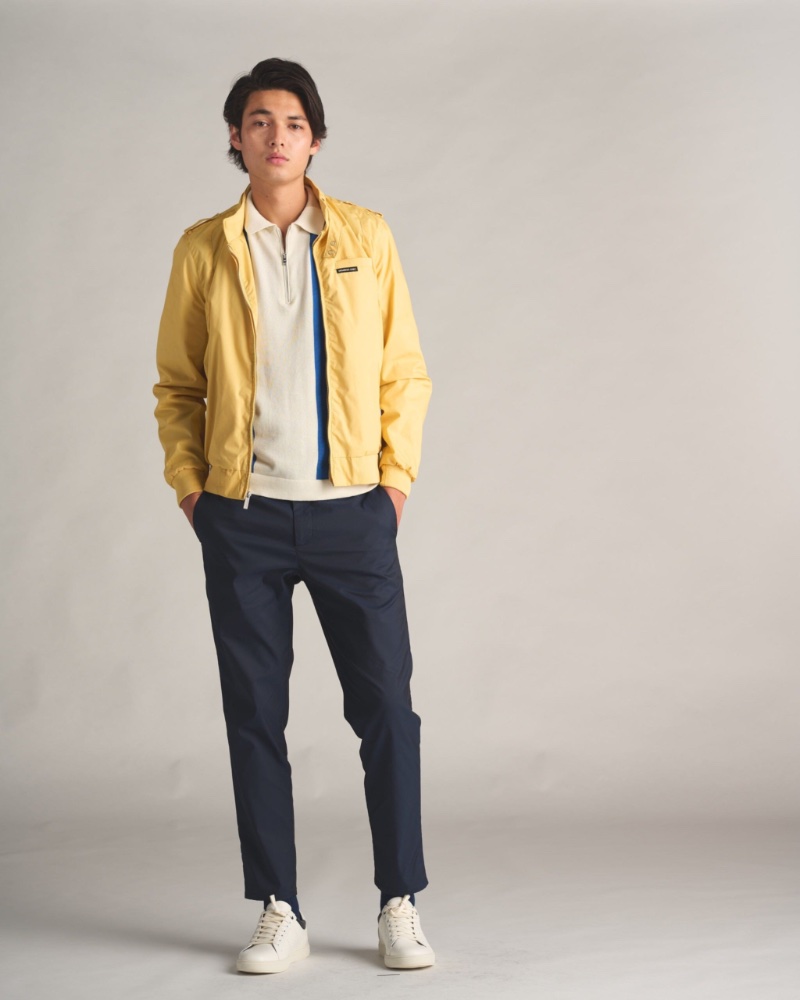
Members Only jackets were everywhere—from TV shows to music videos to everyday life. These lightweight jackets had a distinctive ribbed collar and cuffs, a zippered front, and two slanted pockets.
Not only did they look stylish with their sleek design, but they also came in various colors—from basic black to bright yellow. Plus, they were versatile enough to pair with almost any outfit—whether you were going for the preppy aesthetic or a punk rock vibe.
Varsity Jackets
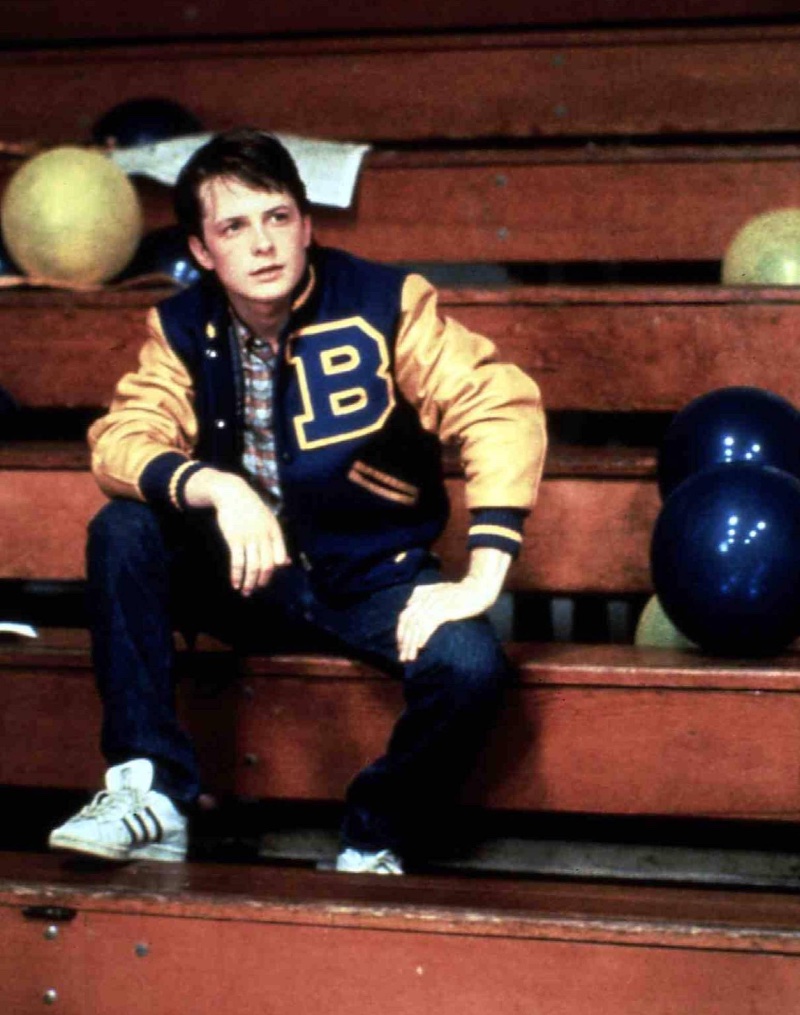
Varsity jackets were iconic, capturing the essence of casual fashion and preppy style. These jackets, often featuring bold lettering and team logos, were trendy among young people.
Paired with white sneakers or high tops, the varsity jacket remains a staple in popular men’s style even today.
Printed Shirts
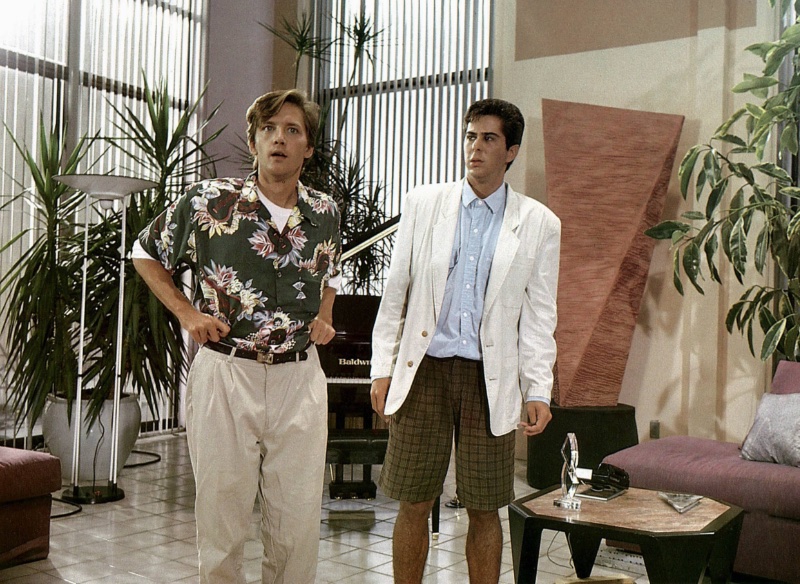
Hawaiian shirts and other printed button-down shirts were all the rage as men sought to make a statement with bold patterns. Hawaiian prints, in particular, brought a fun and tropical vibe to the casual outfit, often paired with blue or black jeans.
Short Shorts
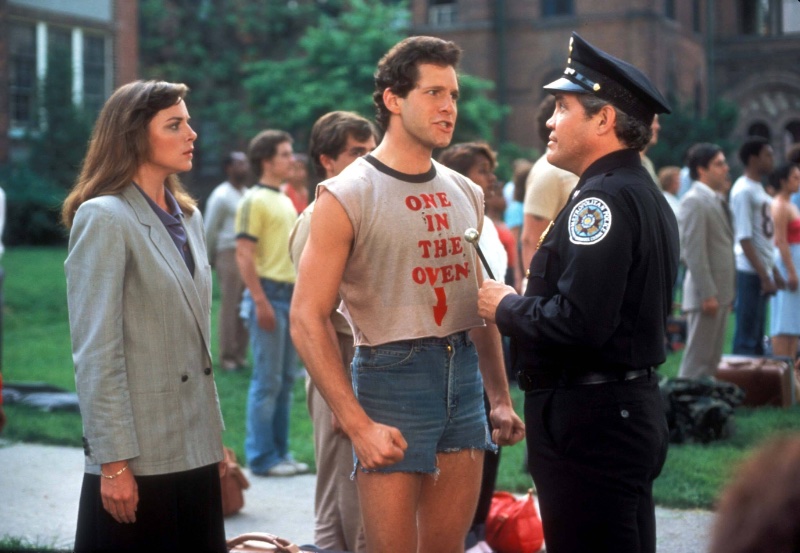
Short shorts were a staple, showcasing a more daring and athletic side to the casual look. These shorts were often worn in solid colors or with bold patterns. Although the lengths have varied over time, the popularity of athletic shorts has remained consistent.
Iconic Accessories
Ray-Ban Wayfarer Sunglasses
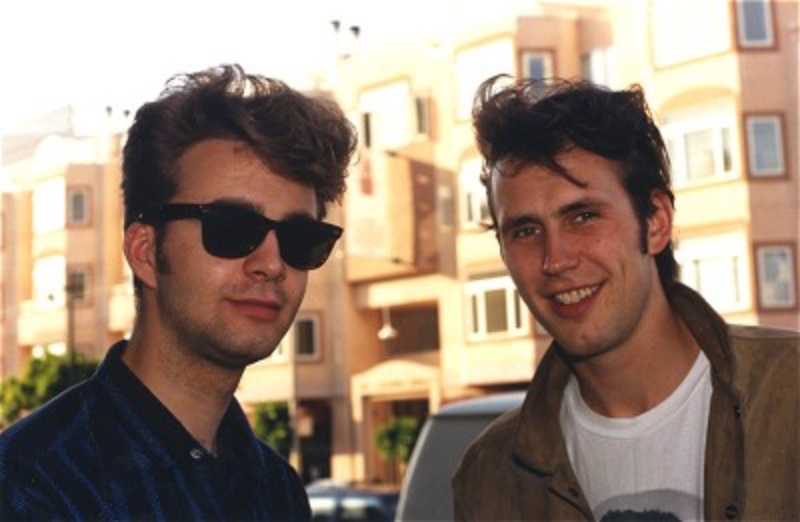
Introduced in the ’50s, Ray-Ban Wayfarer sunglasses became an essential accessory in the ’80s after Tom Cruise donned them in Risky Business. Their black frames symbolized coolness and sophistication, making them popular among musicians, actors, and the public.
Their appeal persisted into the 1990s and remains strong over 30 years later. They are now available in various frame colors and lens tints for a contemporary update on the classic design.
Casio Digital Watches
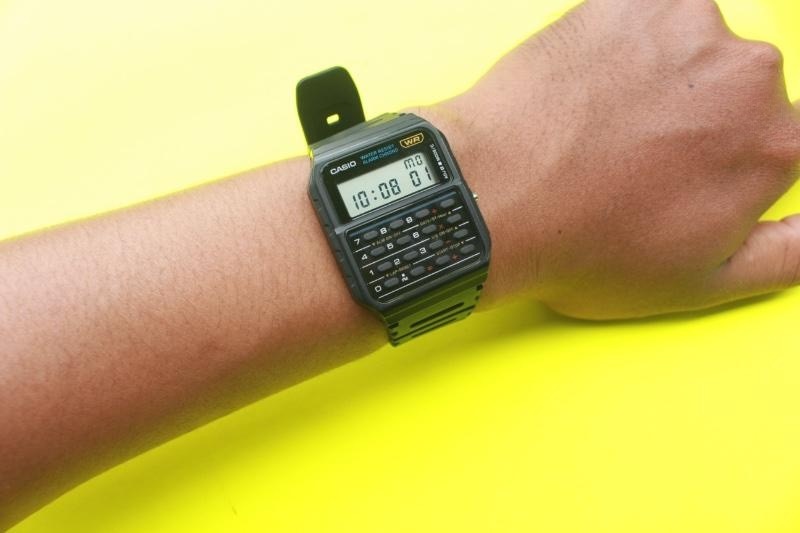
Casio digital watches became essential, known for their functionality and iconic style. Their sleek designs and innovative digital displays, often featuring stopwatches and calculators, distinguished them from traditional watches.
The Casio digital watch’s status as a cultural icon was cemented when Michael J. Fox, as his character Marty McFly in Back to the Future, sported one, showcasing the watch’s coolness and technological edge.
Converse Chuck Taylor Sneakers
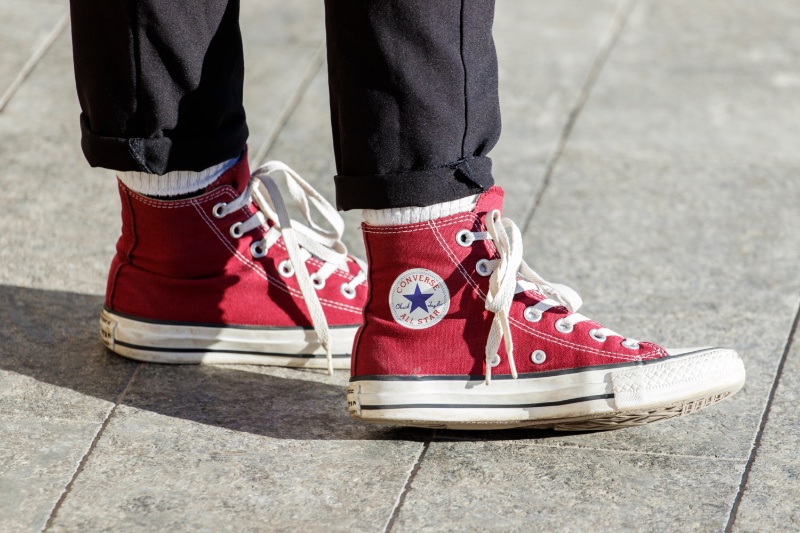
Converse Chuck Taylor sneakers have been around since the early 1900s. However, they didn’t become fashion icons until the ’80s. Their simple yet stylish design made them perfect for pairing with jeans, shorts, or even suits (if you were into the power dressing trend).
The most popular Chuck Taylor style was the high-top version. They came in various colors and patterns—from basic white to neon green. Plus, they were affordable and durable, so you could wear them daily without worrying about ruining them.
1980s Hair for Men
For men’s hair, the eighties were a time of excess, neon colors, and unique hairstyles. Hair was about taking risks and standing out from the crowd. Here are some of the most iconic hairstyles from that decade:
Mullet Haircut
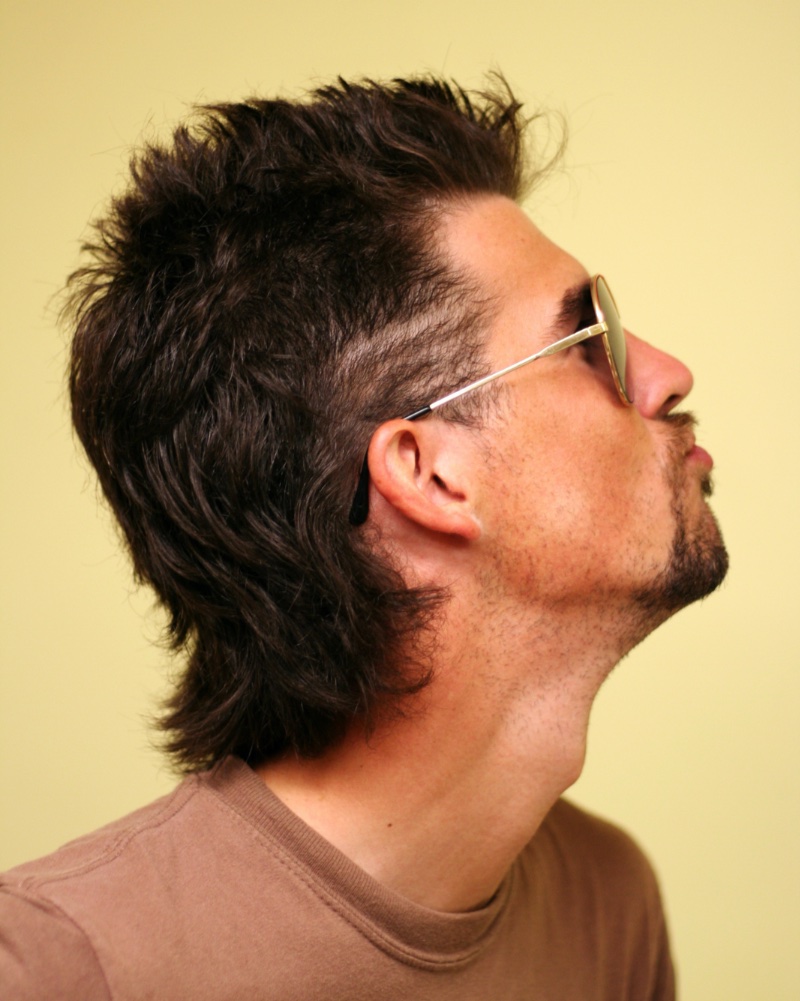
The mullet haircut was characterized by short hair on top and long hair at the back. Think Billy Ray Cyrus or MacGyver—they rocked a mullet. The mullet was often paired with a mustache for maximum impact.
It was also popular to have shaved sides with a long strip of hair down the center, creating a “racing stripe” effect.
Spiky Hair
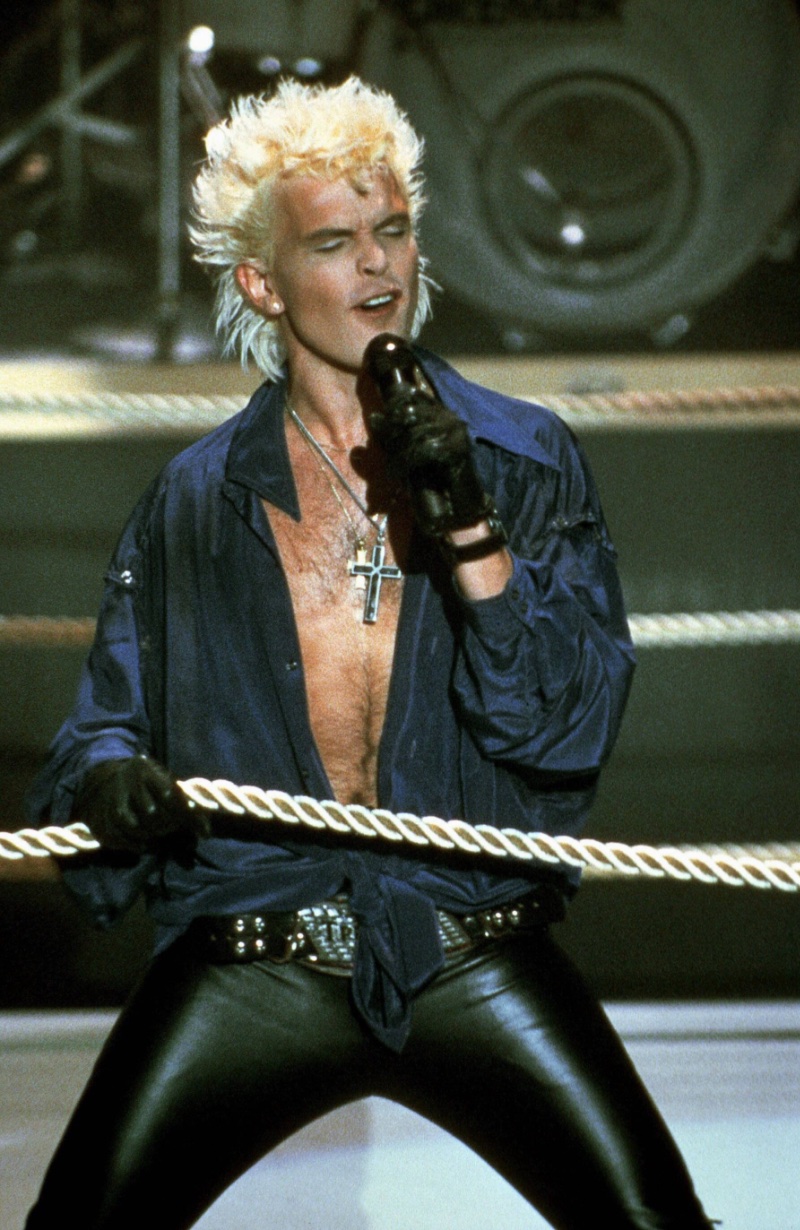
Spiky hair was another popular hairstyle for men. This involved using gel or mousse to create sharp spikes on top of one’s head. This look was often paired with an undercut or shaved sides to make the spikes stand out even more.
It could be seen in everyone from punk rockers to preppy kids trying to add a rebellious edge to their look. Creating this hairstyle required a lot of product and maintenance—spiky hair wasn’t just something you could wake up with naturally.
Side-parted Hair
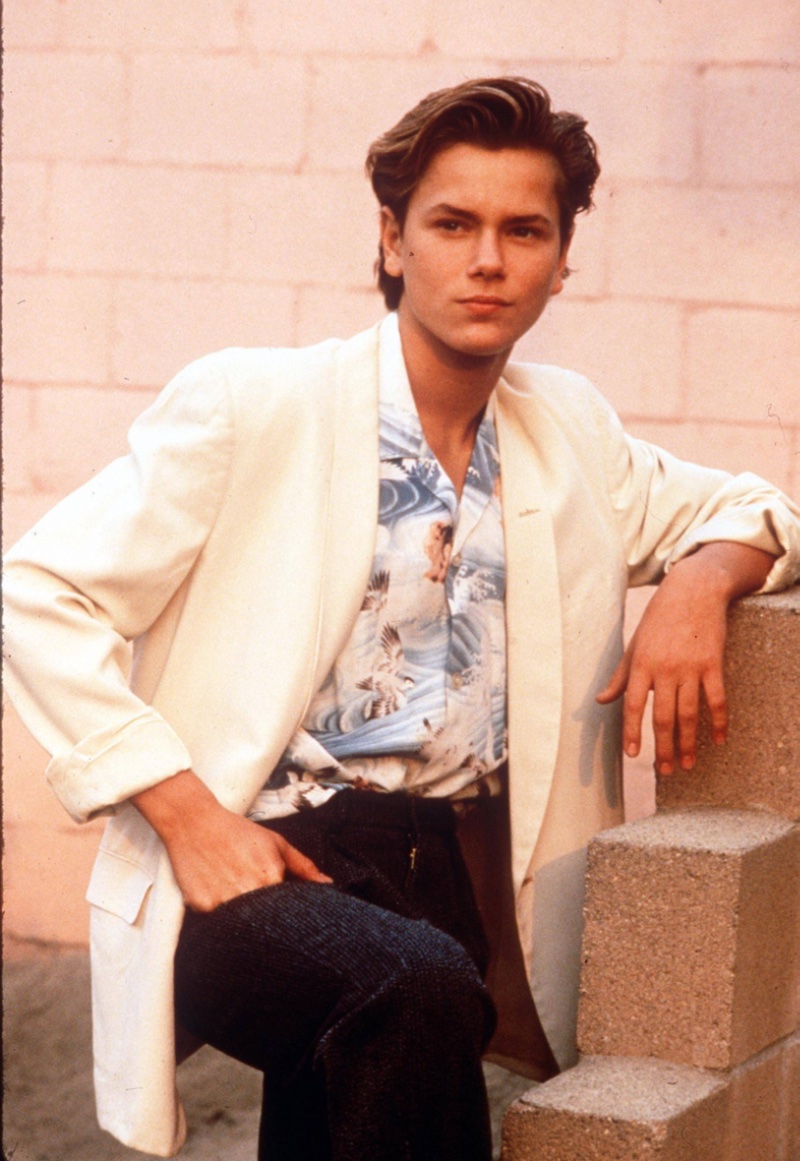
For those who preferred a more classic look, side-parted hair with a comb-over was another popular choice. An off-center part, this style involved combing one’s hair from one side of the head to the other.
The part would be prominent, creating two distinct sections on either side of your head.
Pop Culture Influences on Fashion
Miami Vice: Suits & T-Shirts
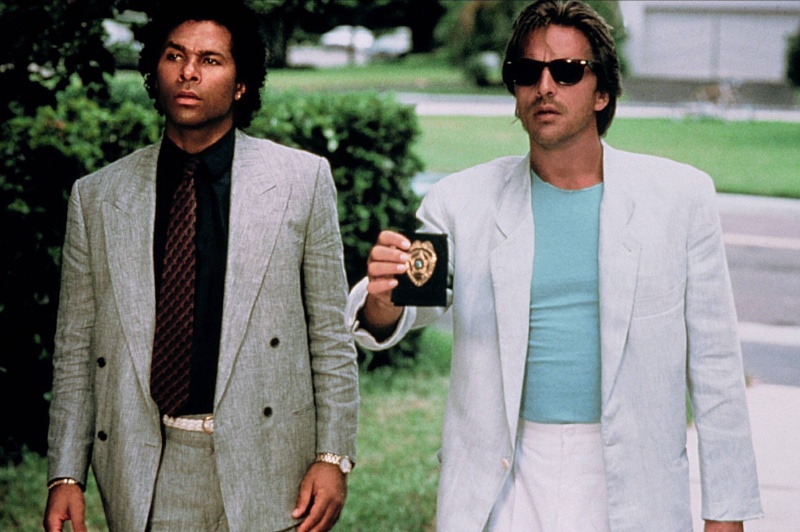
Discussing 80s fashion inevitably brings up Miami Vice, famed for its stylish crime-fighting aesthetic. The show popularized the iconic look of suit jackets over colored t-shirts and white pants, a combination that defined cool in the era.
Characterized by bold, fitted suits in vibrant shades like pink, blue, or yellow, the look was accessorized with sunglasses and sockless loafers. Don Johnson’s Sonny Crockett emerged as a style icon, influencing men to emulate his trendsetting attire.
Michael Jackson’s Thriller: The Red Leather Jacket
Another significant influence on fashion was Michael Jackson’s Thriller music video. In this iconic video, Jackson wore a red leather jacket that quickly became one of the most sought-after fashion items of the decade.
However, people copied more than just the jacket. Jackson also popularized another trend that became synonymous with his name: wearing one glove, whether black or white leather or sequined fabric.
A single glove worn on one hand became a must-have accessory.
Top Gun: Bomber Jackets & Aviator Sunglasses
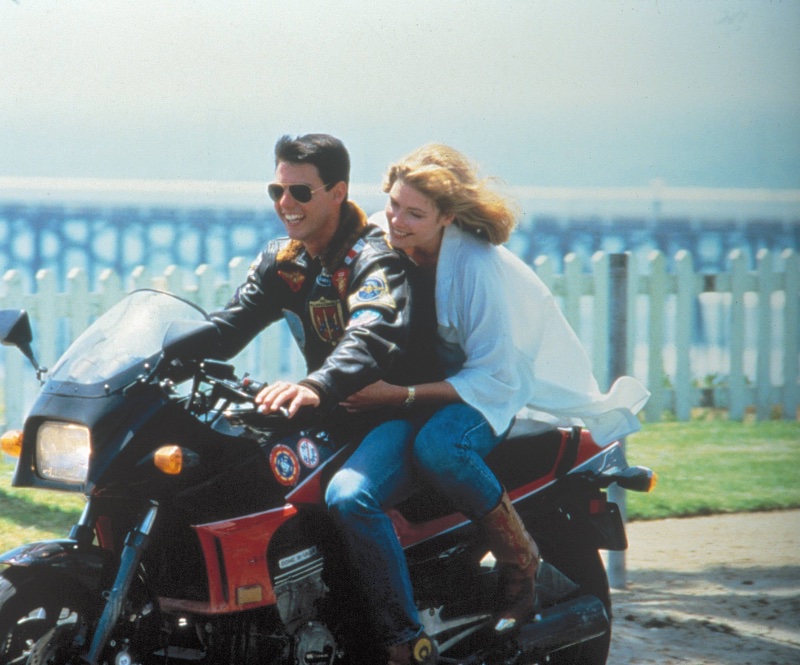
Top Gun, featuring Tom Cruise as the ace pilot Maverick, reignited the cool factor of bomber jackets. These jackets, often adorned with personalized patches and the iconic aviator sunglasses worn by Maverick and his squadron, set a trend that men eagerly embraced for style and personality.
Subcultures that Influenced 80s Men’s Fashion
Hip-Hop Culture: Adidas Tracksuits, Kangol Hats & Gold Chains
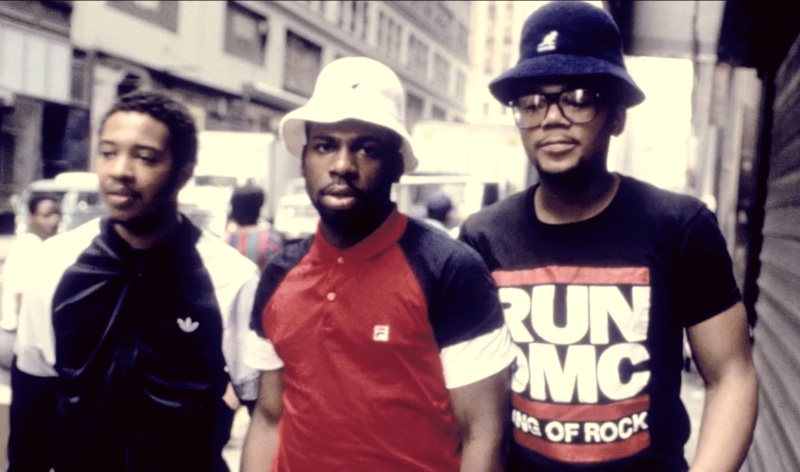
Emerging from the Bronx in the late 70s, hip-hop fashion, characterized by its emphasis on comfort and movement with loose Adidas tracksuits, spread nationwide. Kangol hats, worn with a unique tilt, and gold chains, flaunted by artists like Run DMC to symbolize success, were vital accessories.
Essentials also included bright Adidas Superstars, oversized t-shirts layered over long sleeves or turtlenecks, and bucket hats, cementing hip-hop’s transition from music to a lasting cultural and fashion influence.
New Wave Music Scene: Skinny Ties, Trench Coats & Fedoras
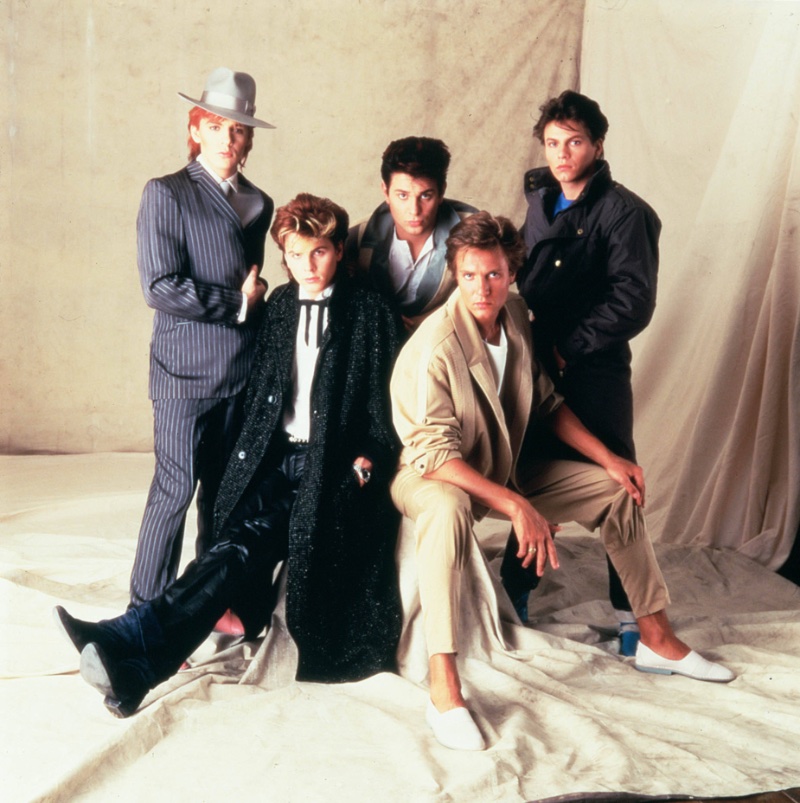
The New Wave music scene, evolving from punk rock in the late 70s with its synthesizer-driven sounds and stylish flair, championed androgyny. Men’s fashion featured skinny ties over collared shirts, while trench coats, often accessorized with fedora hats, added a sophisticated touch.
Suspenders or braces over button-ups enhanced the look. As bands like Duran Duran gained international fame, this style influenced mainstream fashion, leading to the New Romantics movement, which blended punk aesthetics with New Wave elegance.
Heavy Metal Scene: Black Leather Jackets
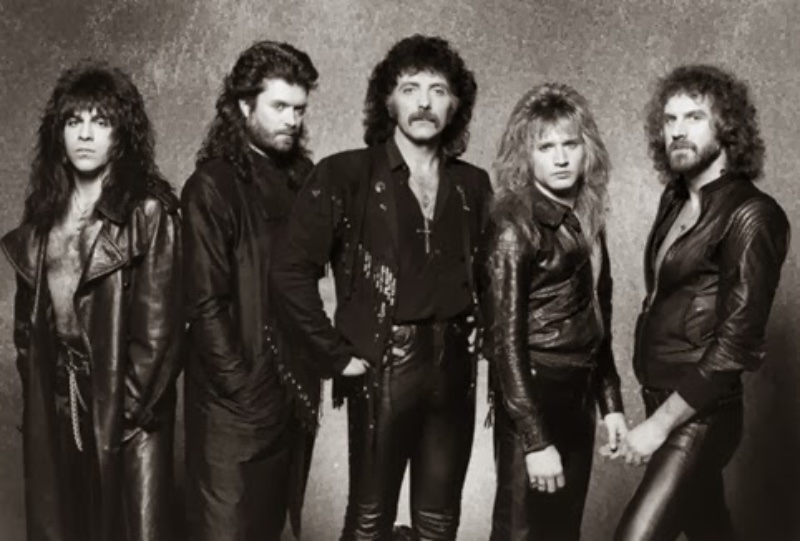
The heavy metal scene was perhaps the most straightforward in fashion—black was the go-to color for everything from T-shirts to leather jackets. Band logos were often emblazoned across clothing items to support one’s favorite group.
Biker jackets were trendy among metalheads—offering both protection and style. Studded belts, tight pants, and combat boots were also commonly worn by fans of the genre.
The Enduring Legacy of 80s Men’s Fashion
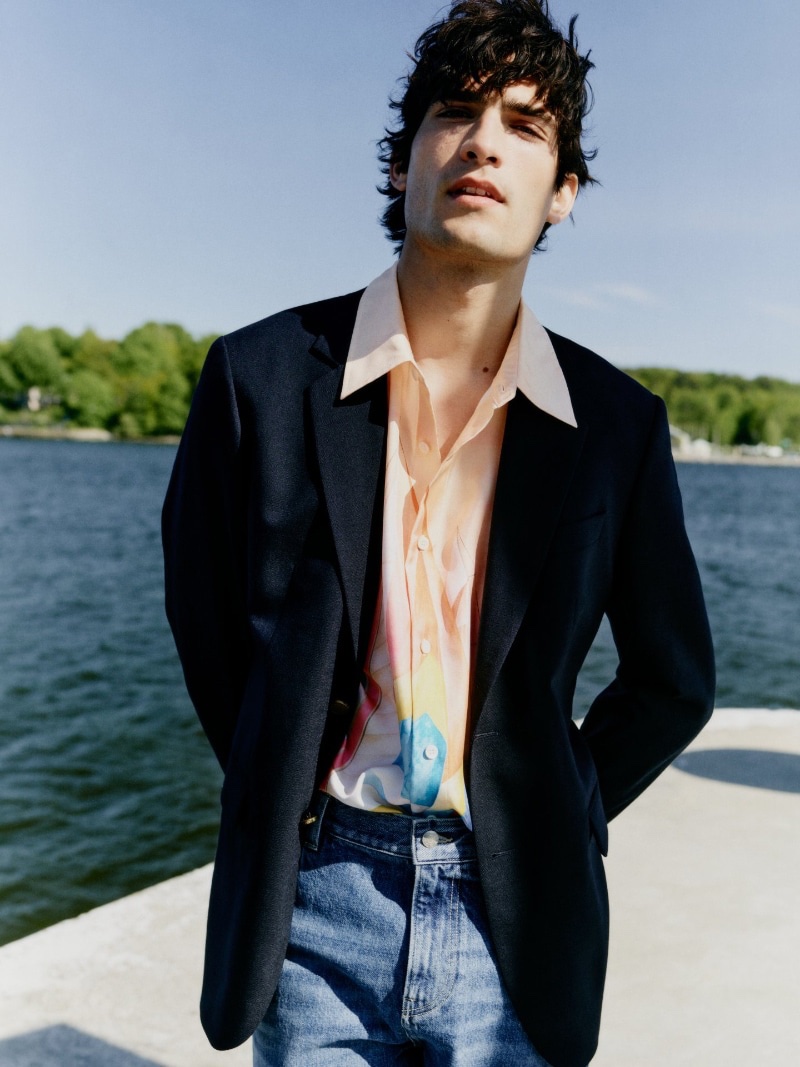
Reflecting on 80s fashion for men, it’s clear how the decade’s creativity and boldness left an unforgettable mark on how we view style and self-expression. This period introduced various trends, from power dressing to rebellious punk rock, that showcased a departure from the conservative approaches of earlier times.
Through an 80s outfit, men found new ways to articulate their identities, influenced heavily by the era’s pop culture icons who championed the importance of individuality. This fearless experimentation of the 80s celebrated a wide-ranging palette of unique looks and set a precedent for the fashion landscapes that followed.
As we continue to draw inspiration from the eclectic styles of the 80s, it’s evident how these influences paved the way for the distinct trends of the 90s, marking a seamless transition into a historic chapter of fashion innovation and expression, deeply rooted in the past yet continuously inspiring the future.
